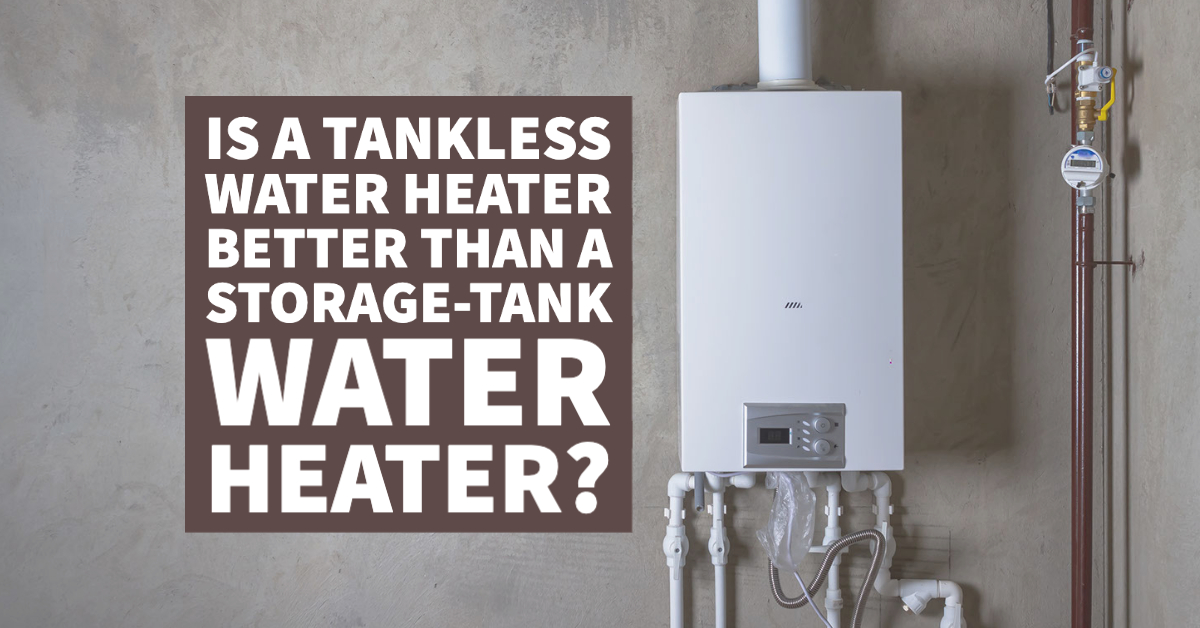Having heated water is such an indispensable part of modern life we can’t imagine having to go without it. Because our hot water comes from our water heaters, a homeowner looking to install a new water heater might wonder whether it’s better to install a tankless water heater or a traditional water heater. Traditional water heaters, which are used in most homes, have a storage tank. In the following, hot water specialists at Middletown Plumbing & Drain discuss the two basic types of water heaters and explain the difference so you can make the best buying decision.
Tankless Water Heater vs. Traditional Water Heaters
The average cost to install a tanked water heater is between $825 and $1,700. Tankless water heaters are more to install than traditional water heaters usually because tankless water heater installation involves more. The average cost of somewhere between $1,000 to $3,000 for parts and labor combined. Each type of system has its upside and downside.
Regardless of the type of water heater you’d like to get, nevertheless, we strongly recommend hiring a licensed professional like Middletown Plumbing & Drain for your new water heater installation. When it comes to overall labor costs and the installation of a tankless water heater compared to the labor costs of installing a tank-style heater, you pay more in labor installing a tankless model. This additional cost, nevertheless, is compensated for by the decrease in water heating costs each month. Tankless water heaters save you money on water heating costs, which account for nearly 20 percent of overall home energy costs.
If you own a traditional water heater, the cost is going to be more each month to heat the water because it’s keeping the water heated around the clock. On-demand water heaters, nevertheless, only heat the water when required.
What Is a Tankless Water Heater?
A tankless water heater produces hot water on demand when it’s needed in your home or business, no matter what your usage needs might be. These tankless systems are fueled either by gas or by electricity; their high-powered burners heat up the water coming to reach desired levels immediately. It then transfers the water through the heat exchanger before sending it to your shower or faucets. Because tankless water heaters heat water on demand, they don’t store it in a tank and keep it heated. Tankless water heaters are powered by electricity or gas as well. Below we present a breakdown of both types:
Electric-Powered Tankless Water Heaters
Gas water heaters, compared to today’s electric tankless water heaters, usually cost less to install. On average, they cost homeowners between $800 and $1,500. That’s for professional installation services that are backed by a warranty. The lower cost to install is because the installation work is easier to perform. Electric water heaters, however, don’t require gas venting like their gas counterparts. They’re also a lot less dangerous because a homeowner isn’t using gas for fuel, which can present safety hazards. Common downsides of electric-powered heaters include things like slower heating rates and higher utility costs.
Gas-Powered Tankless Water Heaters
On average, gas-powered tankless water heaters cost between $1,000 and $1,500 for professional installation. If your home or building that’s connected to a natural gas line or near one, you are in luck. This will make it a lot easier to tap into existing gas lines (which we may be required). In any case, you should buy propane on your own if you don’t have natural gas in your area already available.
What Are Tank Water Heaters?
Traditional water heaters, as we noted, use a storage tank. Traditional water heaters are currently used in about 90% of the homes in the U.S. One of the biggest differences between a traditional water heater, and a tankless water heater is the need for the large storage tank for keeping hot water ready for whenever it’s needed. These tanks use up a chunk of space in the home. Some hold anywhere from 40 to 120 gallons of water. They keep all that water heated around the clock. Traditional water heaters use a pipe that leads from the top of the water tank to your plumbing and out to all your hoses and faucets. Similar to a tankless water heater, a traditional water heater uses either natural gas or electricity to heat the water.
The Pros and Cons of Both
The advantages of using a traditional water heater are that they cost less to install upfront. Additionally, they heat large amounts of water and keep it stored for whenever it’s needed. They are also a lot easier to work on and repair. The disadvantage of a tanked water heater is also its need for storage space. They also don’t last as long as tankless water heaters, and they tend to cost more each month in energy usage because they constantly heat the water throughout your home.
The main benefits of tankless water heaters include their small size. Because they are very compact and can go in all sorts of places, like under sinks and inside cabinets. Not to mention, they are also very energy efficient as well, which makes them better for the environment. They also heat water a lot faster. The downside includes their expensive installation costs. It costs more because the work can involve retrofitting, which we at Middletown Plumbing & Drain also help perform in an affordable way. Last but not least, a lot of tankless water heaters run out of hot water, and their maintenance and repair costs can be more.
Are you considering the installation of a new water heater?
Whether you want a traditional water heater or a tankless water heater, your hot water heater install experts at Middletown Plumbing & Drain are always available to help.
Give us a call today at (937) 298-9979, or schedule an appointment online now by clicking here!

